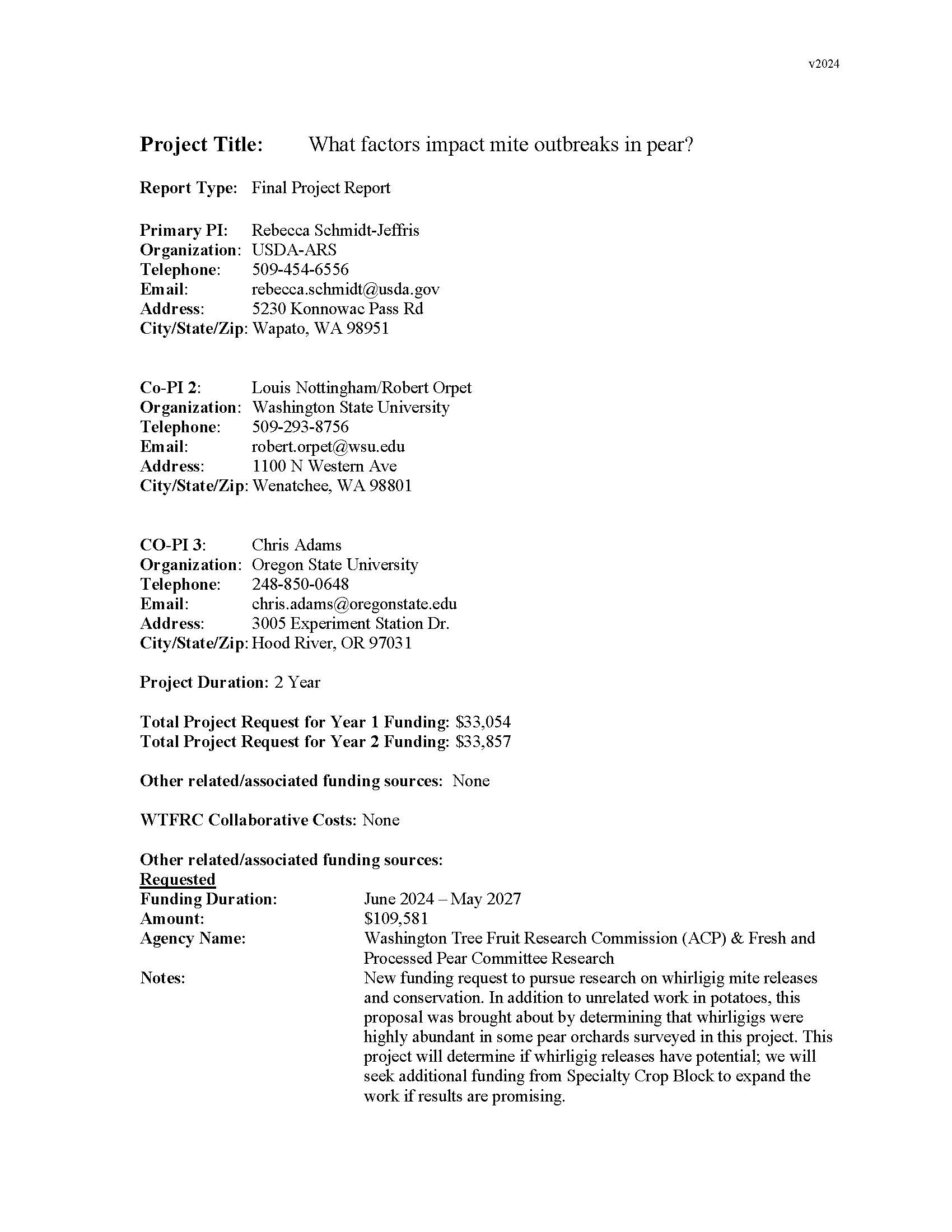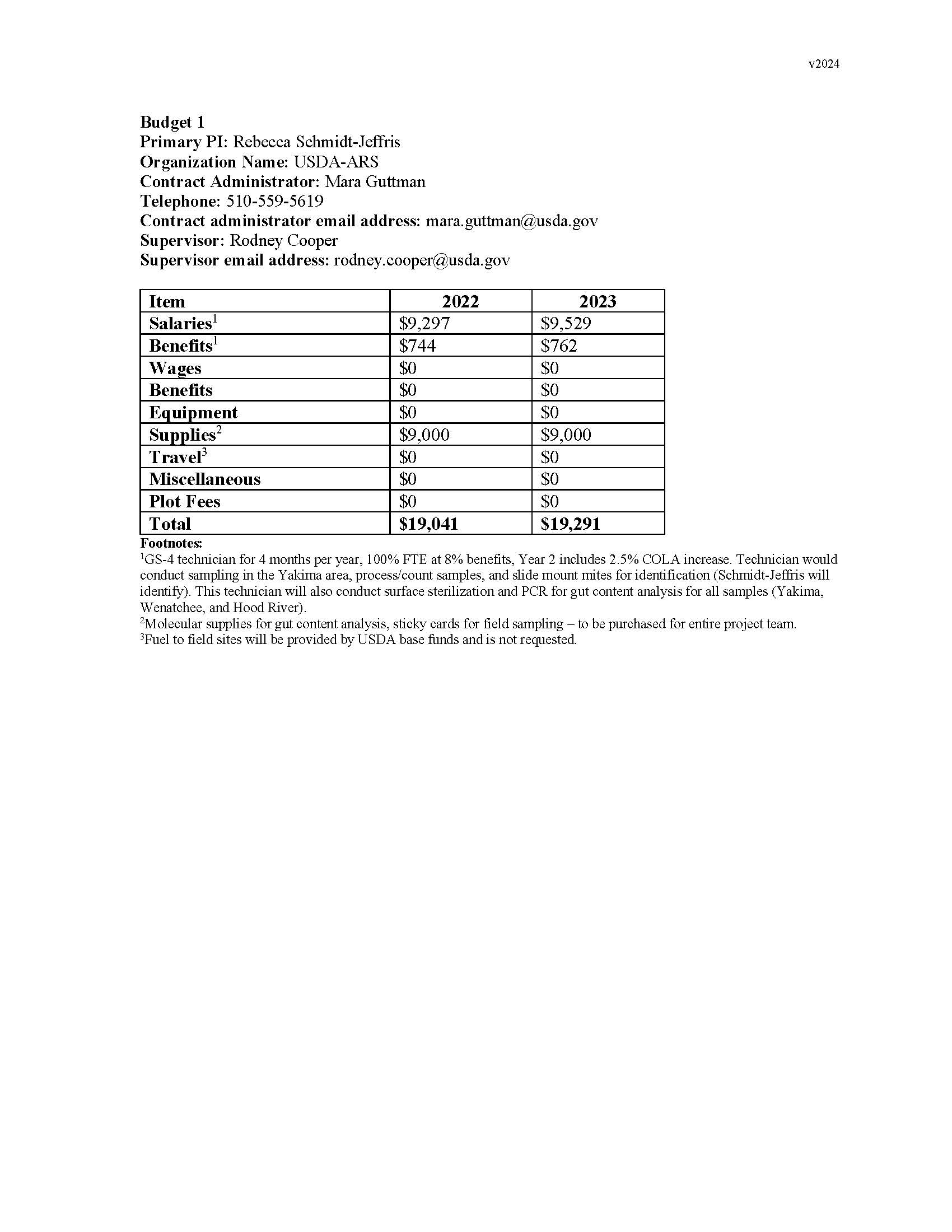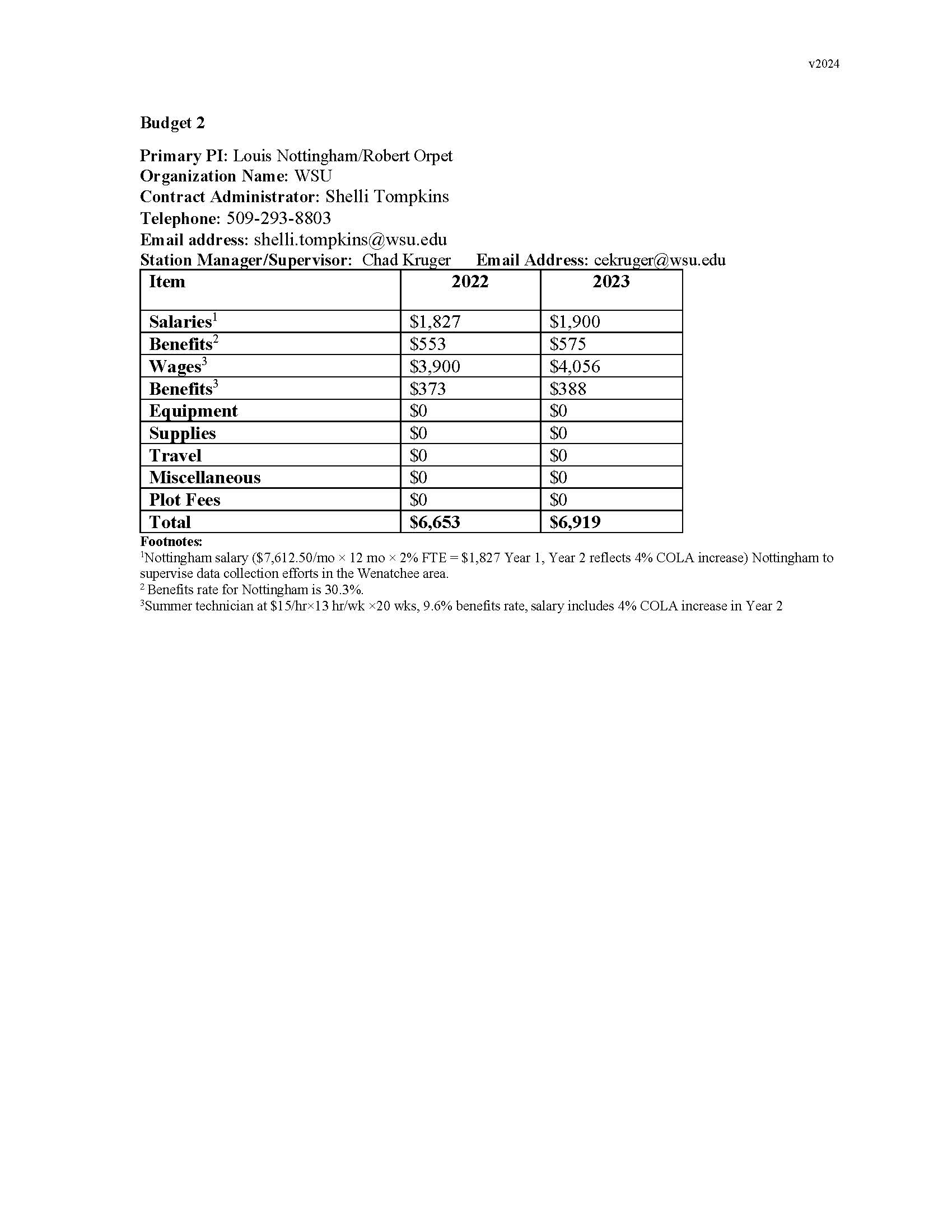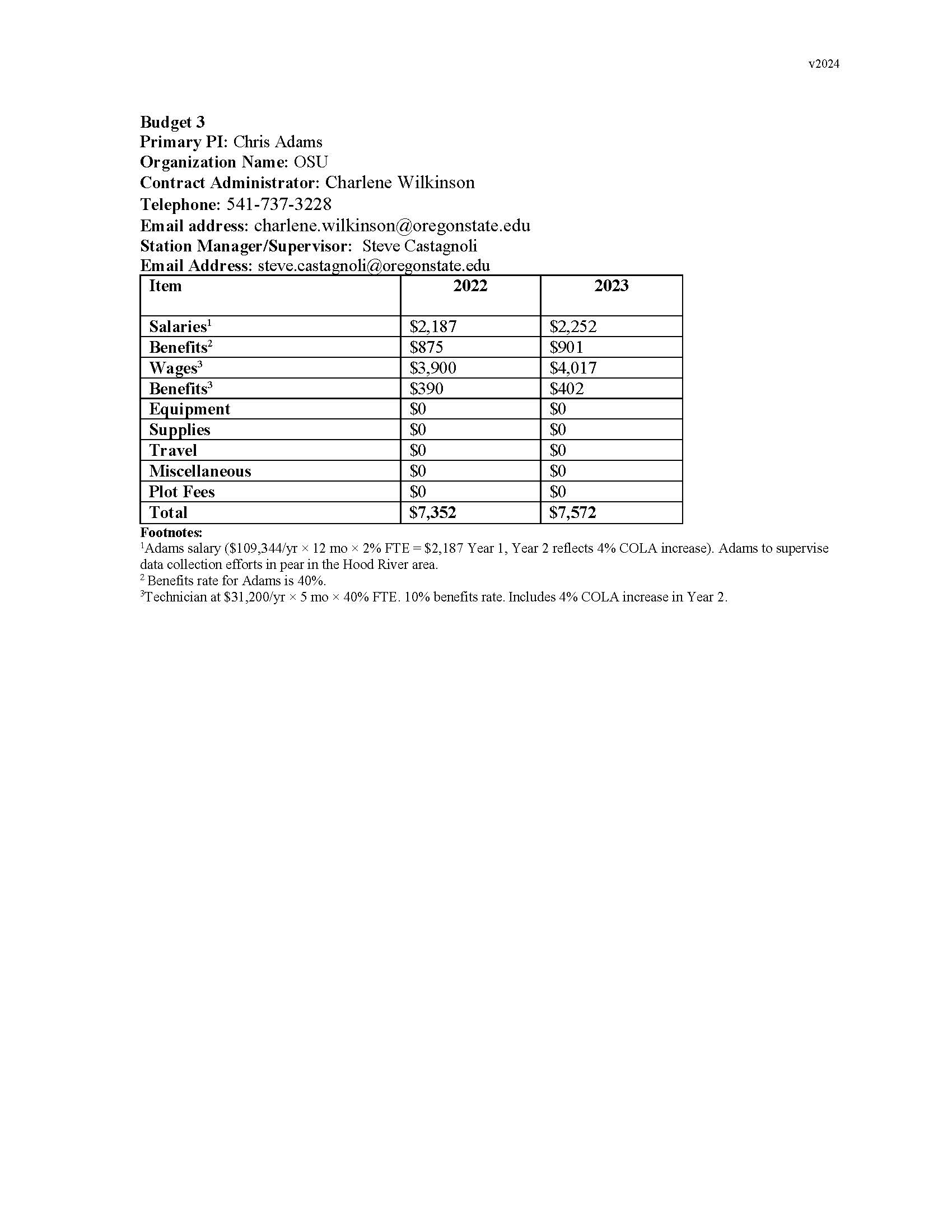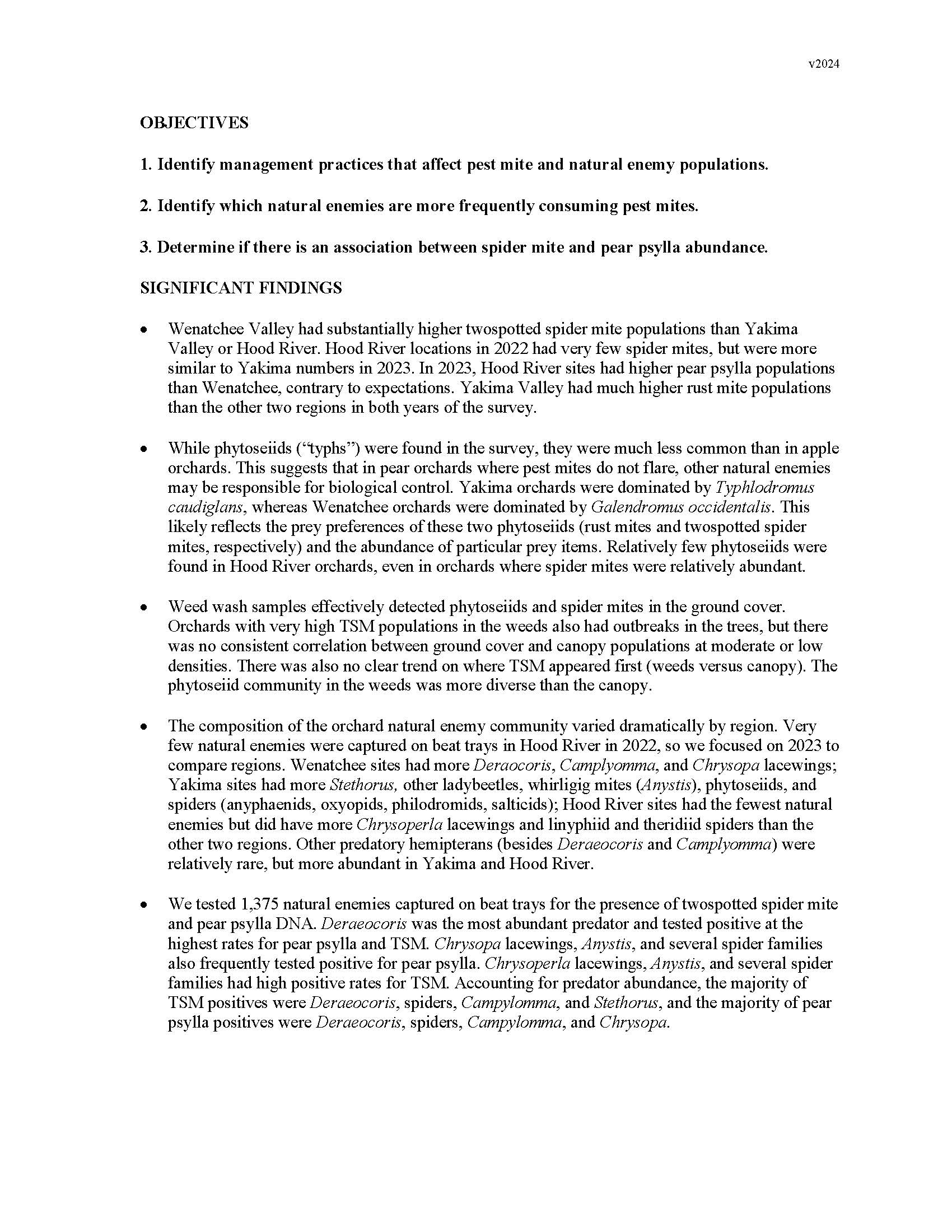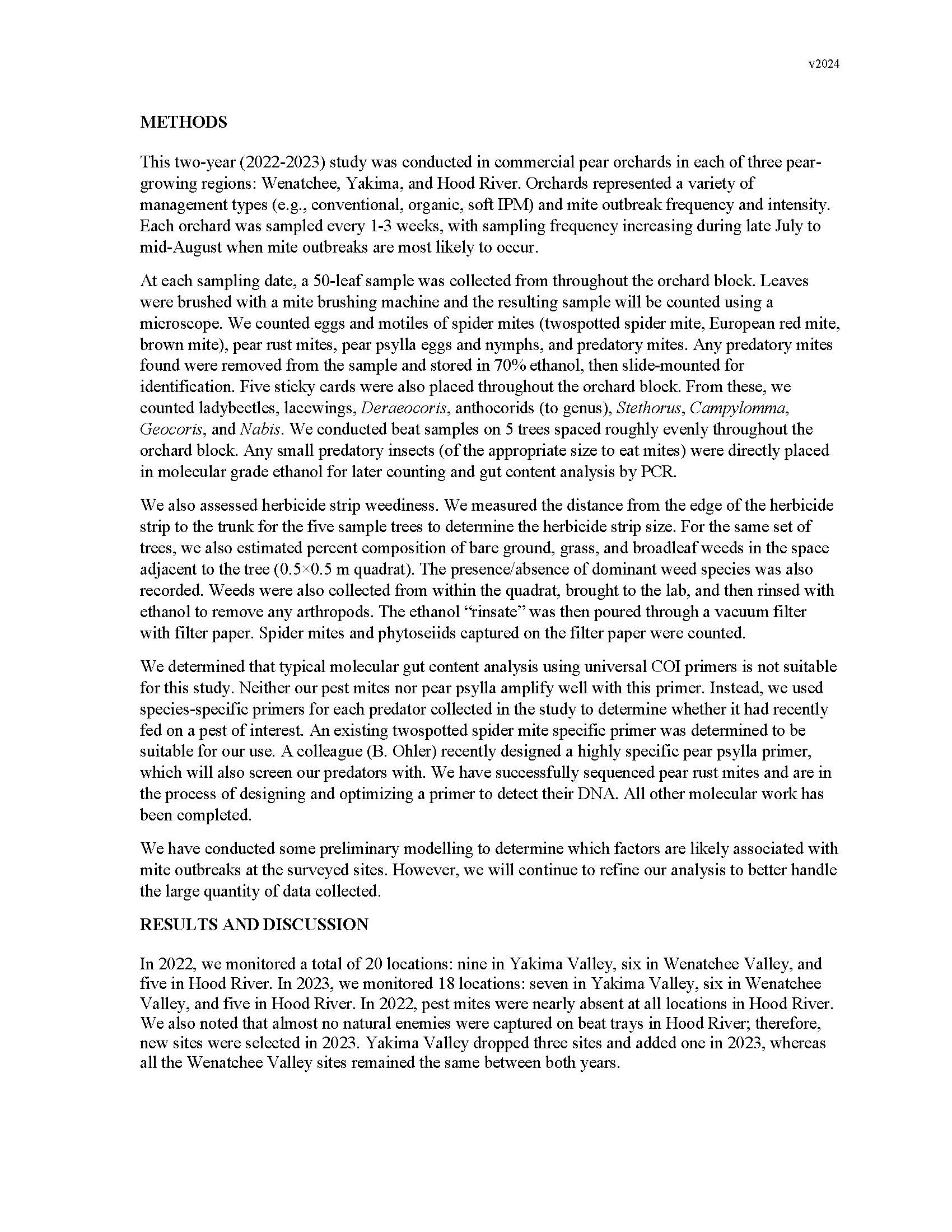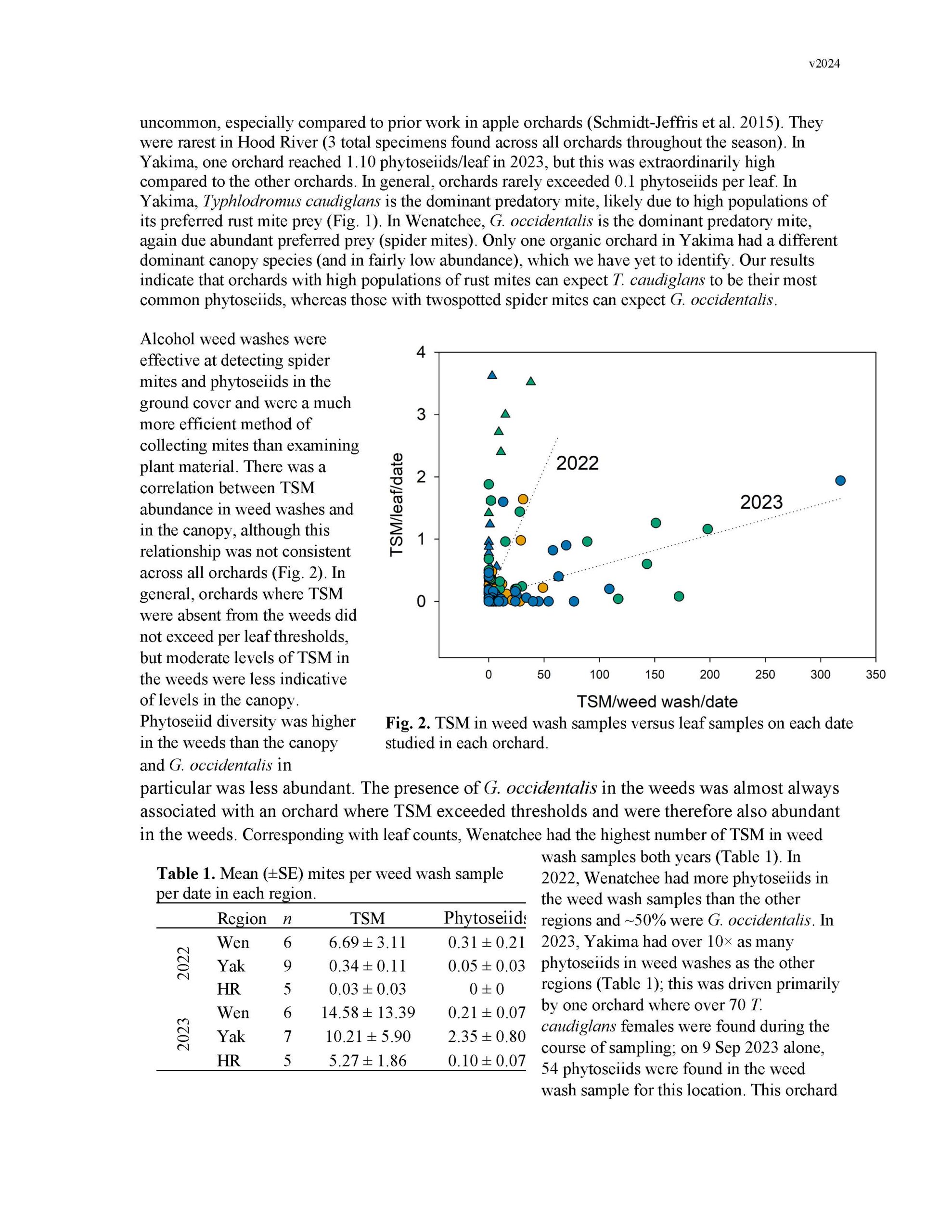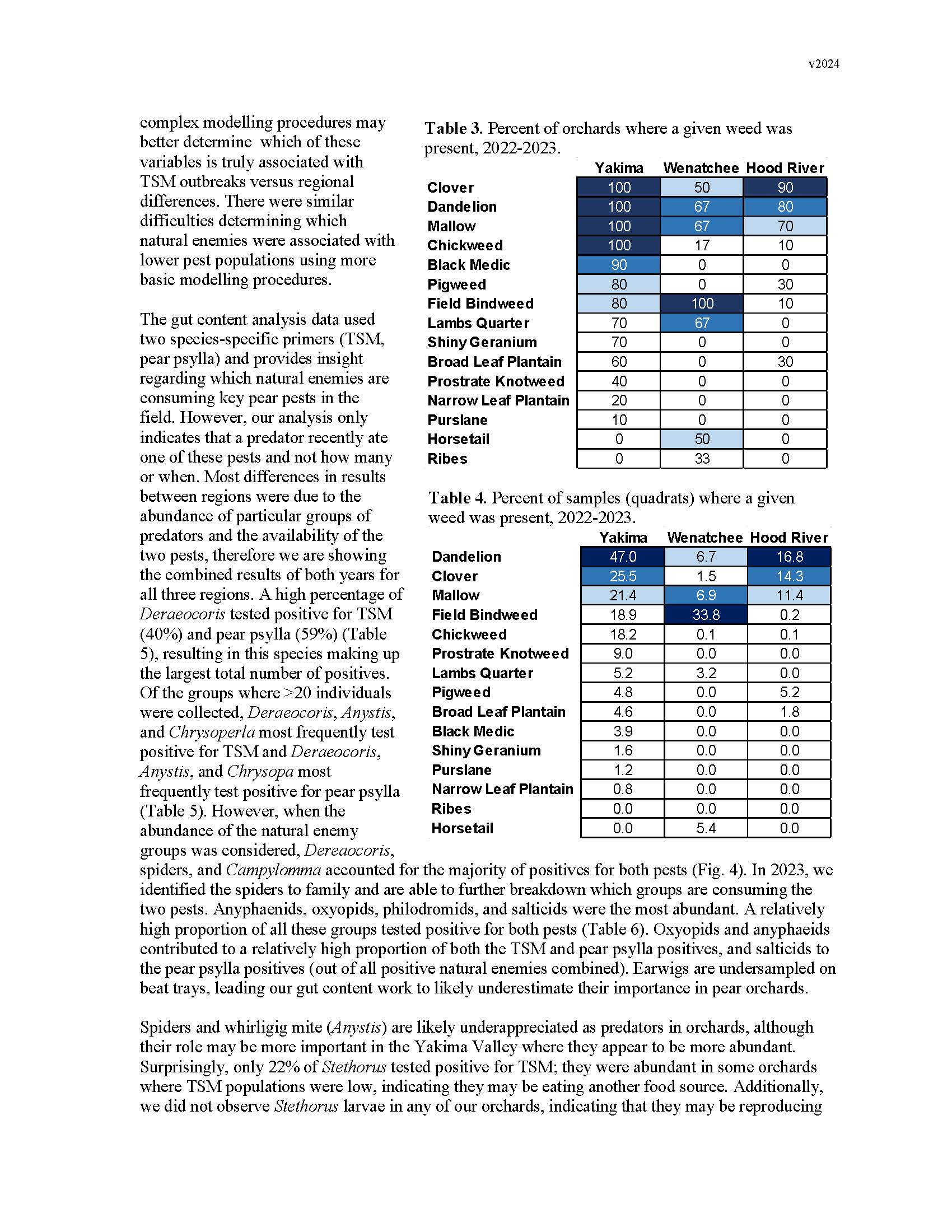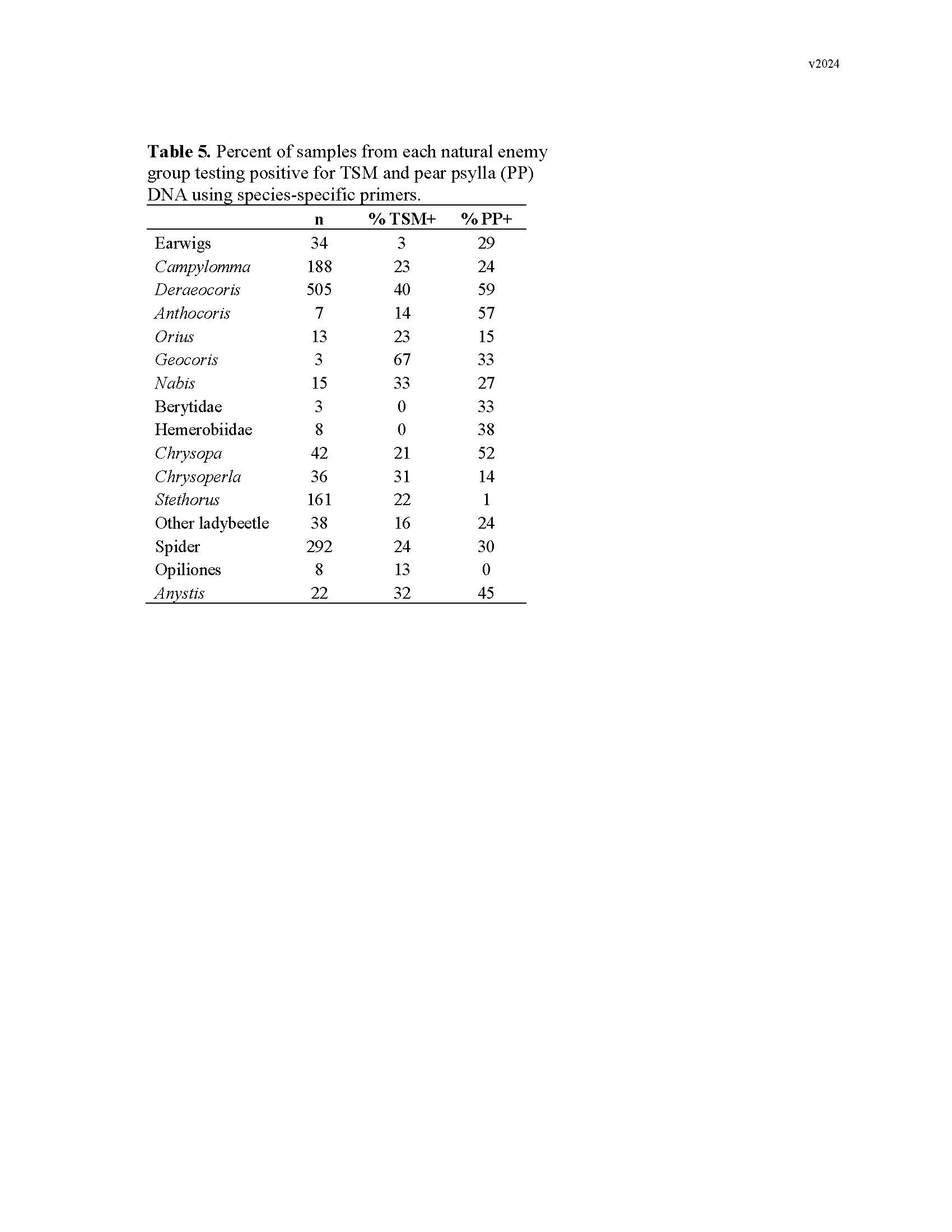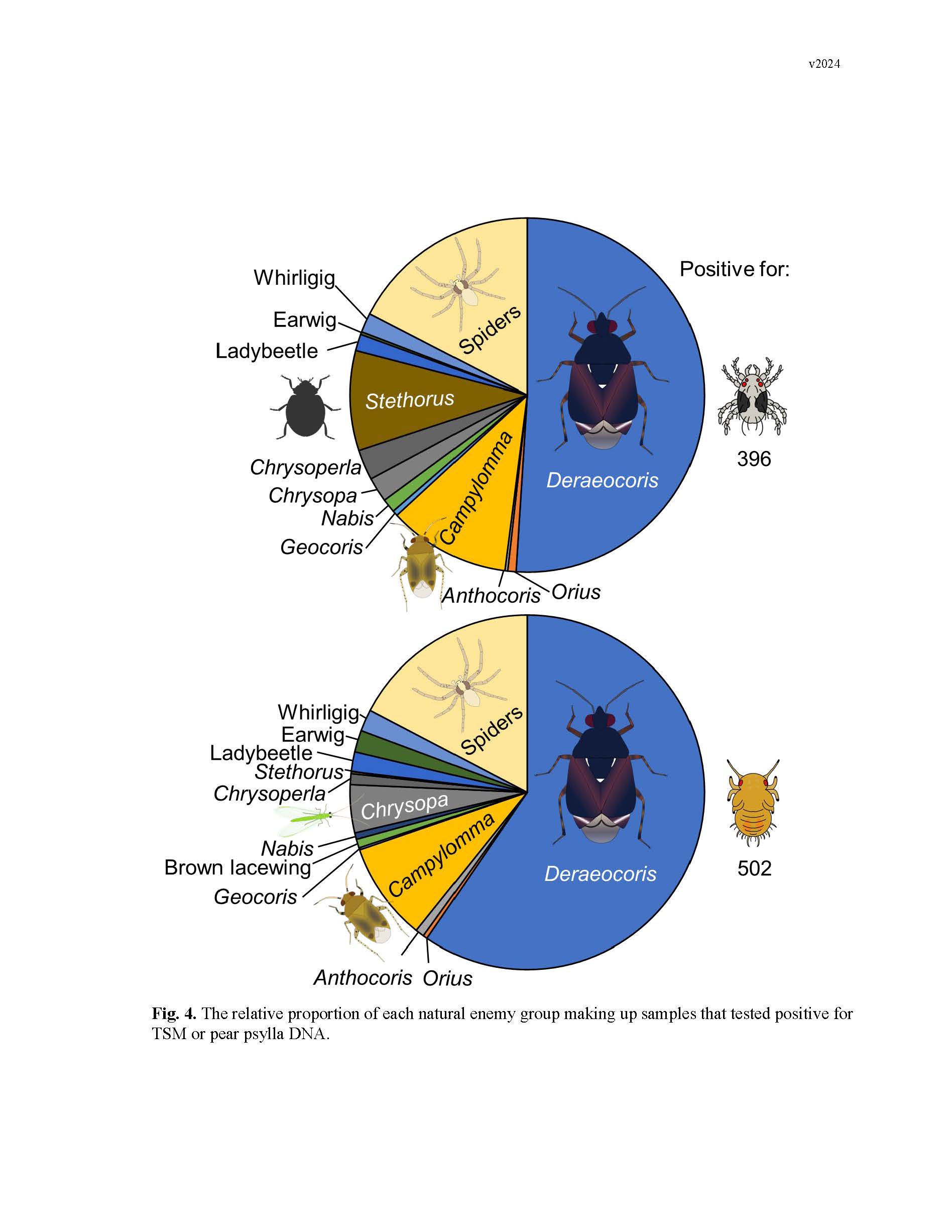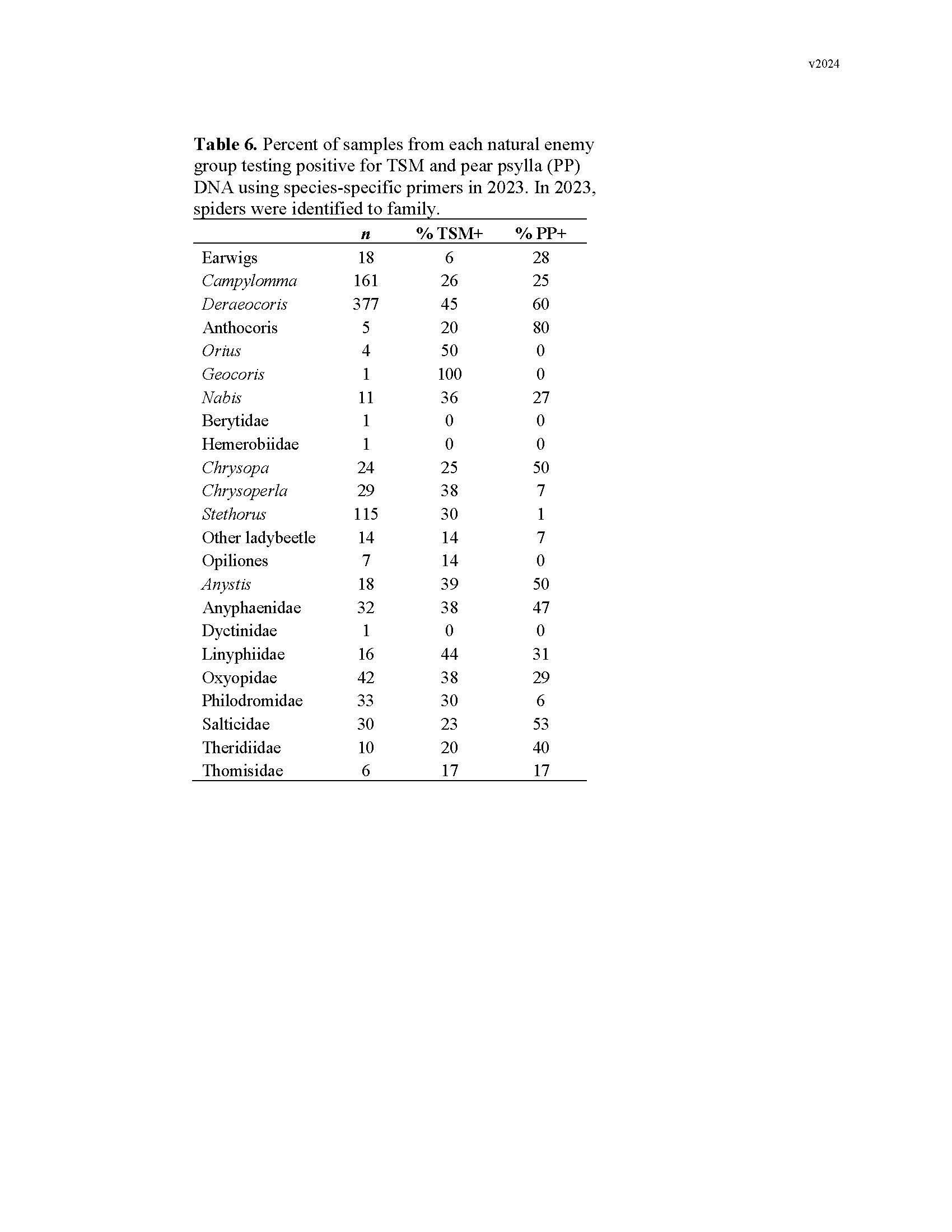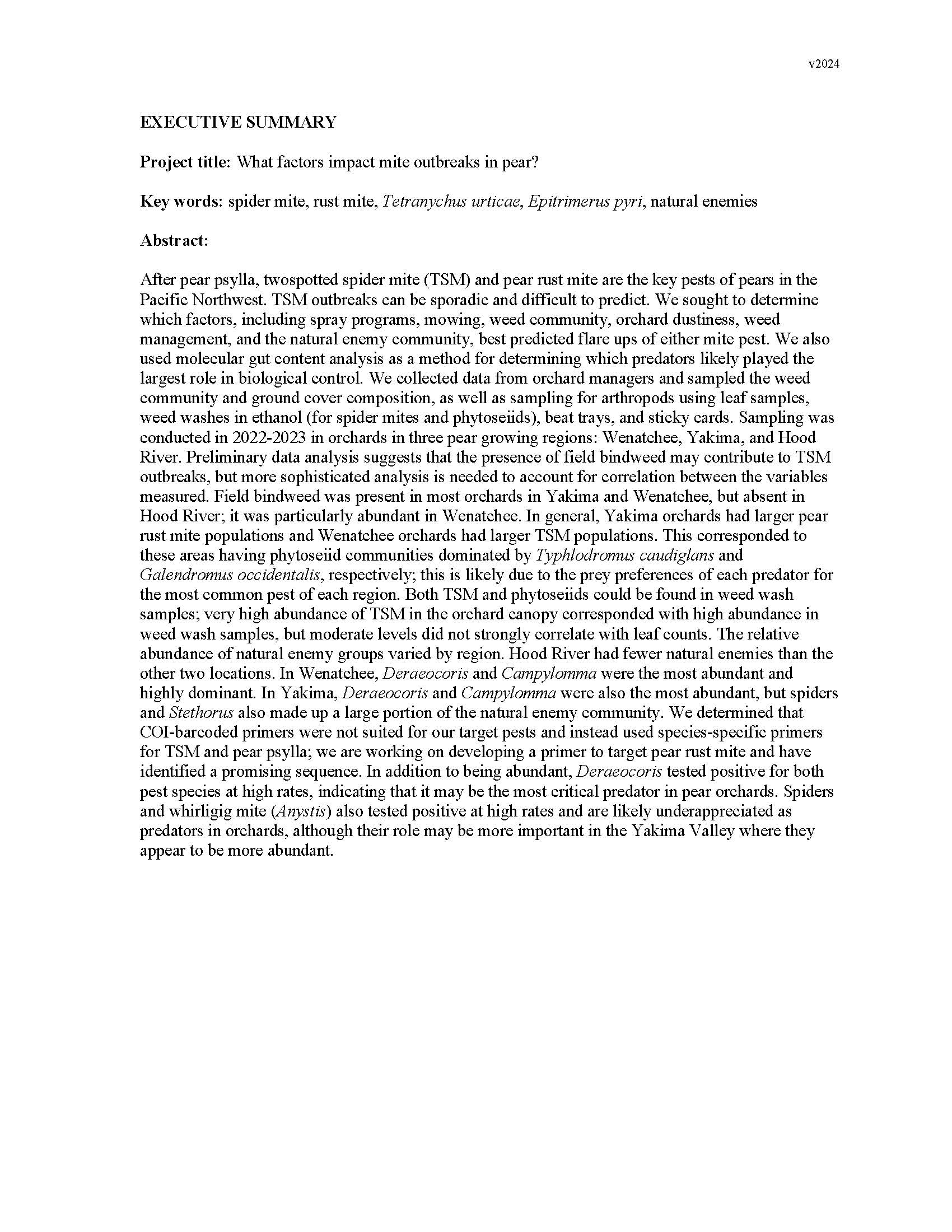What factors impact mite outbreaks in pear?
Author: Rebecca Schmidt-Jeffris
Published: 2025
Summary: After pear psylla, twospotted spider mite (TSM) and pear rust mite are the key pests of pears in the Pacific Northwest. TSM outbreaks can be sporadic and difficult to predict. We sought to determine which factors, including spray programs, mowing, weed community, orchard dustiness, weed management, and the natural enemy community, best predicted flare ups of either mite pest. We also used molecular gut content analysis as a method for determining which predators likely played the largest role in biological control. We collected data from orchard managers and sampled the weed community and ground cover composition, as well as sampling for arthropods using leaf samples, weed washes in ethanol (for spider mites and phytoseiids), beat trays, and sticky cards. Sampling was conducted in 2022-2023 in orchards in three pear growing regions: Wenatchee, Yakima, and Hood River. Preliminary data analysis suggests that the presence of field bindweed may contribute to TSM outbreaks, but more sophisticated analysis is needed to account for correlation between the variables measured. Field bindweed was present in most orchards in Yakima and Wenatchee, but absent in Hood River; it was particularly abundant in Wenatchee. In general, Yakima orchards had larger pear rust mite populations and Wenatchee orchards had larger TSM populations. This corresponded to these areas having phytoseiid communities dominated by Typhlodromus caudiglans and Galendromus occidentalis, respectively; this is likely due to the prey preferences of each predator for the most common pest of each region. Both TSM and phytoseiids could be found in weed wash samples; very high abundance of TSM in the orchard canopy corresponded with high abundance in weed wash samples, but moderate levels did not strongly correlate with leaf counts. The relative abundance of natural enemy groups varied by region. Hood River had fewer natural enemies than the other two locations. In Wenatchee, Deraeocoris and Campylomma were the most abundant and highly dominant. In Yakima, Deraeocoris and Campylomma were also the most abundant, but spiders and Stethorus also made up a large portion of the natural enemy community. We determined that COI-barcoded primers were not suited for our target pests and instead used species-specific primers for TSM and pear psylla; we are working on developing a primer to target pear rust mite and have identified a promising sequence. In addition to being abundant, Deraeocoris tested positive for both pest species at high rates, indicating that it may be the most critical predator in pear orchards. Spiders and whirligig mite (Anystis) also tested positive at high rates and are likely underappreciated as predators in orchards, although their role may be more important in the Yakima Valley where they appear to be more abundant.
Keywords:

